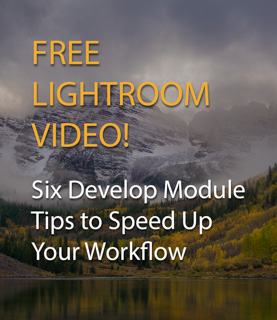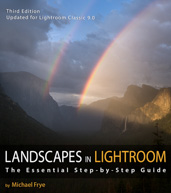by Michael Frye | Jun 29, 2025 | Light and Weather
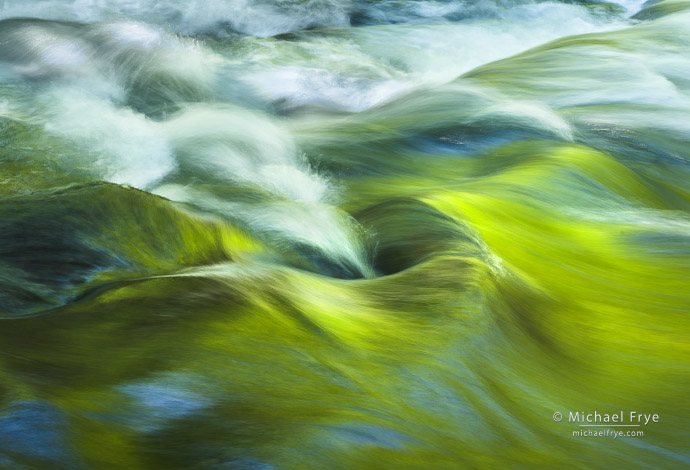
Cascade and spring reflections, Great Smoky Mountains NP, Tennessee. I loved the repeating patterns created by the standing waves in this cascade, coupled with the vivid green reflections. 52mm, 1/3 sec. at f/16, ISO 100.
You can find every shade of green in the Smokies in spring – light green, dark green, blue-green, yellow-green, and everything in between. Occasionally the greens are mixed with a splash of blue sky or white water, but it’s a green world.
Our eyes and brains can distinguish more shades of green than any other color. The cones in our retinas, which perceive color, are more sensitive to green wavelengths than other colors – not surprising for a species that evolved in African forests, where distinguishing between shades of green helped find food and avoid predators.
(more…)
by Michael Frye | Mar 4, 2025 | Digital Darkroom
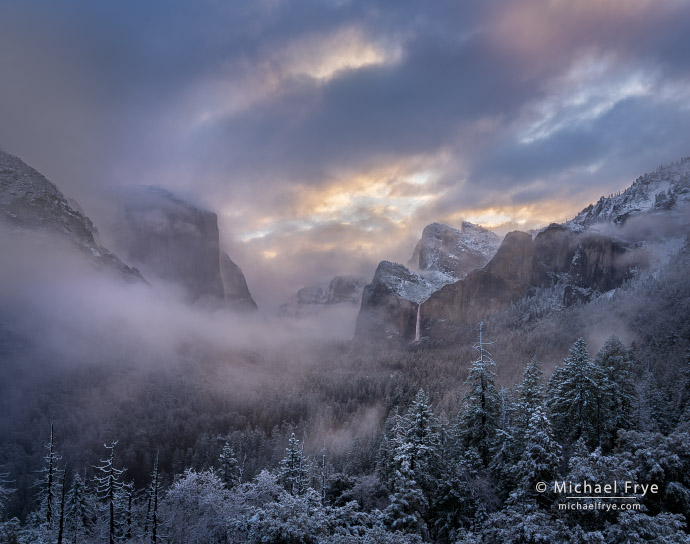
Winter sunrise from Tunnel View, Yosemite NP, California
After all our travels, Claudia and I are back home. Yesterday I drove up to Yosemite Valley before sunrise, as a small storm was clearing.
Looking at the weather models the night before, I didn’t have high hopes for this sunrise. Although I thought there could be a light dusting of snow, it appeared the storm would clear in the middle of the night, which usually means the fog and mist will dissipate by morning. But I set my alarm for 4:00 a.m. just in case. And when I awoke I could see that clouds and scattered showers had lingered all night, so there should still be some mist. And it also looked like skies would start clearing shortly after sunrise. So no going back to bed – time to go!
(more…)
by Michael Frye | Mar 2, 2025 | Composition
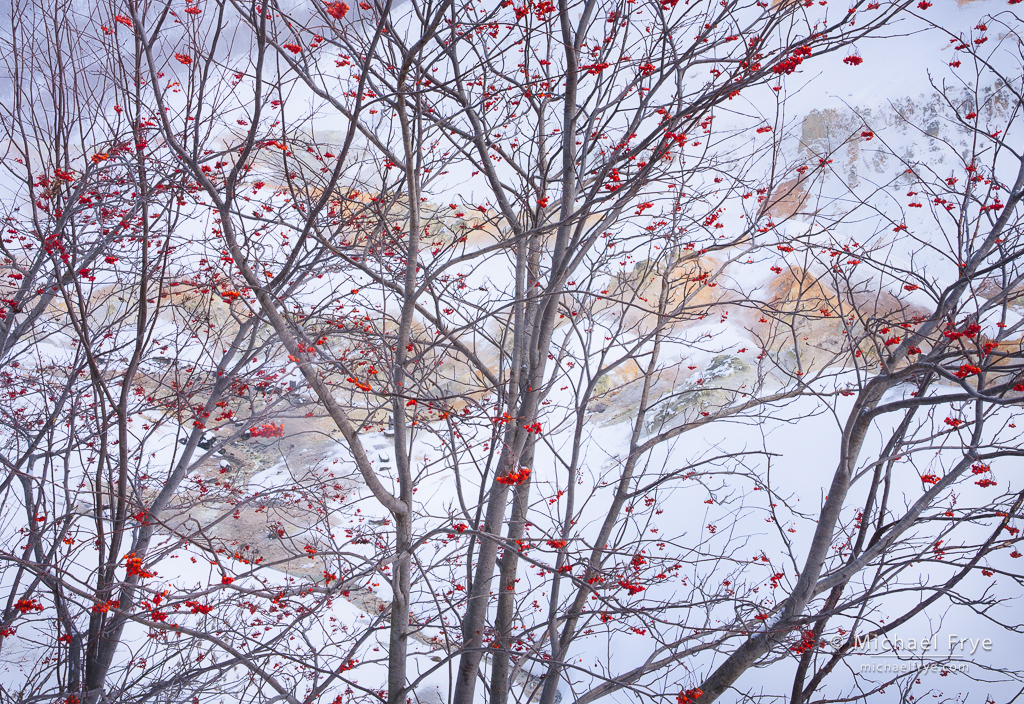
Japanese rowan tree in a thermal area, Hokkaido, Japan. A complex photograph that I discuss in depth below.
Hokkaido has become known for its minimalist landscapes, with trees, fences, or other objects isolated against the snowy winter backdrop. These zen-like compositions can be striking and beautiful, and I made my share of sparing, super-simple photographs there, following in the footsteps of Shinzo Maeda and Michael Kenna.
But there are many ways to photograph any location. My co-instructor on our Hokkaido trip for Visionary Wild, Toshiki Nakanishi, has lived in central Hokkaido for 20 years, and his images tend to be more complex and dramatic. Check out this image, for example – taken from his house! (With a telephoto lens.) Or this amazing photo.
(more…)
by Michael Frye | Feb 6, 2025 | Travels and Stories
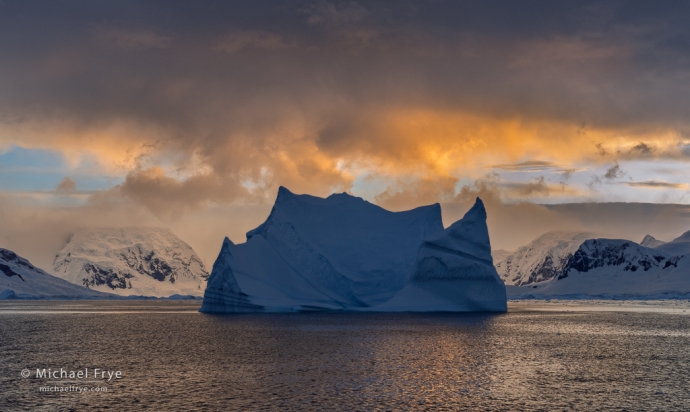
Iceberg at sunset, Antarctica. As if putting on a grand finale, we passed a large, beautifully-shaped iceberg just after sunset, with colorful clouds lingering in the sky to the south.
As I said in my last post, I had a wonderful and eye-opening introduction to Antarctica. But the next day, January 18th, would be even better.
By this second morning we were all starting to get used to the rhythms of life on board the ship, and our group had quickly gelled. We had a really great group, and had lots of fun together. And the crew members of the Hans Hansson were all super nice, going out of their way to make us all feel comfortable and give us the best experience possible.
The day began with overcast skies – which gave us a little extra sleep, since there wasn’t a compelling reason to get up for sunrise at 3:00 a.m.! But later in the morning skies started to clear.
(more…)
by Michael Frye | Jan 5, 2025 | Announcements
The votes are all in and counted, and here are my top photographs of 2024!
We had a great response this year: 627 people looked through my initial selection of 45 images and voted for their favorites. A big thank you to everyone who took the time to look through these photographs and voice your opinions! I also really appreciate the kind words so many people posted in the comments or sent by email. I wish I could respond to everyone, but please know that I’ve read them all and am very grateful for all your support.
(more…)





